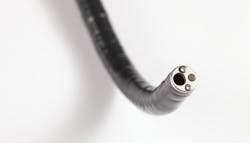Considerations for closing then re-opening endoscope, processing operations
We all know we are in unchartered territory dealing with the ramifications of the COVID-19 pandemic. The associated reprioritization within healthcare facilities has resulted in temporary closures for part or all of endoscopy operations. Many ambulatory surgery centers (ASCs) are closed, and larger health systems have seriously limited the number of sites performing endoscopy – whether it be GI, Pulmonary, ENT, OR, or other clinical domains. As these temporary closures occur, it will be paramount to critically evaluate processes to ensure patient safety when the sites reopen.
Considerations include the management of endoscopes, storage areas, supplies, processing equipment, and spaces. This goes well beyond anything we have commonly experienced before. Endoscopy clinics are familiar with managing opening after a long holiday weekend, or after temporary power outages to provide a couple of examples. Those situations involve being closed for a few days. With the current pandemic, clinics are facing shutdown for weeks or even months. How long will this current state exist? That uncertainty alone creates the need for a measured and deliberate response.
Risk assessment plan
Imperative is a complete risk assessment and implementation plan using a multidisciplinary team with representation from Infection Prevention, Safety, Facilities, Supply Chain, and Environmental Services, as well as management and staff representatives from affected clinical sites and processing areas.
Prudent planning should include consulting the manufacturers’ instructions for use (IFUs) for all endoscopes and equipment. Likewise, it will be essential to review current established standards and guidelines from the clinical professional societies and standards organizations that direct endoscope use and processing.
Additionally, it will be incumbent upon team members to keep abreast of the frequent updates - especially the direction provided by the FDA (https://www.fda.gov/emergency-preparedness-and-response/counterterrorism-and-emerging-threats/coronavirus-disease-2019-covid-19) and the Coronavirus Taskforce (https://www.coronavirus.gov/). And the recently published multi-societies document: “Management of endoscopes, endoscope reprocessing, and storage areas during the COVID-19 Pandemic” https://www.asge.org/docs/default-source/default-document-library/gi-society-management-of-endoscope-fleet.pdf.
Also, and if current resources and restrictions allow, we can consider making use of any closures/downtime to establish and/or review various processes and quality control measures. This is not an all-inclusive list, but offers some opportunities for consideration:
- Inventories – endoscopes, accessories, supplies.
- Policies - reviewed and updated.
- Training – more and more remote learning options exist.
- Documentation reviews, including competencies – gap analysis assessment and planning for addressing this as the unit reopens.
- Process changes that didn’t already exist - can now be developed (e.g., cleaning verification, active drying post-AER, ventilated storage, and/or active drying in storage).
- Equipment PMs - that typically are a challenge to schedule around.
- Develop, update, and enhance standard practice references and lists.
- Review existing and develop new process and quality metrics.
As your facility adjusts to the new normal, your vendors can provide valuable resources to help make productive use of the down time. Below is a partial list of what trusted vendors can provide:
- Continuing education
- Access to an existing and growing library of free online CE opportunities and
- Webinars.
PPE
As the headlines reminds us, personal protective equipment (PPE) is in short supply. But as studies have demonstrated Covid-19 survives and thrives in the GI tract. So, the use of proper PPE is more important than ever to protect healthcare workers. This includes:
- Face shields, gowns, and gloves
- Covered transport carts and containers
- Protective covers for equipment, including personal electronic devices, such as smart phones.
Storage
With endoscopes and other equipment and accessories in extended storage, it is more important than ever that they be stored in an appropriate state for extended hibernation.
Contaminated endoscopes in storage are an excellent environment for biofilm formation. This is true even when storing just overnight. The problem is multiplied many-fold, when stored for an extended period. It is critical that they be clean and disinfected and that their cleanliness is verified by testing and by visual inspection.
Endoscopes with damage and scopes that are not dry are particularly vulnerable to such problems. Use the tools that vendors supply and thoroughly clean, disinfect, test and inspect each endoscope that is going into extended storage. If there is damage or other observed issues, send those scopes out for repair. The current down time is a chance to get your inventory of scopes in proper working condition. Relevant tools to accomplish this include:
- Use non-linting wipes and brushes to manually clean endoscopes prior to running in an AER.
- Use visual cue and indicator labels to record the details of reprocessing and of testing.
- Add protection for scopes in storage including scope sleeves.
- Test for residual moisture detection with humidicator tests.
- Use cleaning verification tests after manual cleaning to be sure there are no detectable levels of organic soil remaining.
- Conduct microbial surveillance testing after HLD to test for viable organisms that might remain.
- Visually inspect internal channels with a borescope and inspect externally with lighted magnification.
Of course, if any of these verification tests indicate an issue, thoroughly reprocess that scope and test again.
The overarching goal through these very difficult times – as always - is ensuring safe patient care, as well as safe and effective management of resources: staff, endoscopes, equipment, and supplies.
Below are some key questions and considerations for risk assessment and implementation planning. Please note:
- This is not an all-inclusive or exhaustive list for every setting.
- Frequent references to “multidisciplinary determination” reflect both the variances between institutions’ practices, as well as the uncertainty regarding the shutdown length.
CLOSING CONSIDERATIONS
Flexible endoscopes and storage
- NOTE: Flexible endoscopes that are sterilized and remain in their sterile packaging require only that the packaging remains protected and intact.
- Review/ensure that complete processing - including internal and external drying - occurred before storage. Consider use of residual moisture detection methods and/or borescopic inspection. If any doubt re: level of processing/drying that occurred - consider re-processing.
- Leave flexible endoscopes post-HLD in protected storage (i.e. endoscope storage cabinets).
- Ensure storage cabinet doors are shut and HEPA filter fans are functioning.
- Ensure security of storage – while limited or no staff are onsite.
- Multidisciplinary determination re: affect on institution’s “hang time” requirements - versus reprocessing endoscopes when re-open (see re-opening considerations). This needs to be factored in before unit actually reopens (to allow for adequate time).
Endoscopy procedure areas
- Multidisciplinary determination and/or established institutional protocols re: cleaning requirements for endoscopy tower and procedure spaces.
- Catalog supplies repurposed to other clinical areas.
Endoscope processing equipment
- Prepare AER for long-term storage as described in AER manufacturer IFU. This may require running a disinfection cycle.
- Automated flushing pumps and attachments will require disinfection cycle – follow pump manufacturer IFU.
- Chemistries may need to be completely discharged/emptied from AERs - follow AER manufacturer IFU.
- Cycle off any/all automated equipment - as per equipment manufacturers’ IFUs.
- Cycle off any/all lighted magnifiers.
- Cycle off any/all computers.
Processing areas
- Surface disinfection for all work surfaces.
- Multidisciplinary determination re: reprocessing versus disposal for reusable cleaning brushes before reopening (see re-opening considerations).
- Catalog supplies repurposed to other clinical areas.
- Manual disinfectant soak bins emptied, cleaned, and disinfected.
Processing chemistries (detergents and disinfectants)
- Multidisciplinary determination re: disposition for partially-used detergent containers.
- Ensure stored inventory for all chemistries meets local fire/safety requirements.
Documentation/Data
- Secure any/all processing documentation (electronic and/or paper).
IN ADVANCE OF RE-OPENING
Flexible endoscopes and storage
- Multidisciplinary determination re: re-processing flexible endoscopes before clinical use - taking into consideration institutional “hang time” policy.
- Disinfect storage cabinets - per established institutional protocol.
- Ensure storage cabinet HEPA filters have been replaced as per IFU.
Endoscopy procedure areas
- Focused disinfection for endoscopy tower and procedure spaces - to include reusable transport containers.
- Re-processing for any reusable endoscope buttons and valves left in procedure area.
- Evaluate/ensure adequate inventory/PAR for supplies.
- Review expiration dates for disposable precleaning supplies.
Endoscope processing equipment
- Multidisciplinary determination re: plumbing lines feeding AERs and decontam. sink lanes - whether needs to be disinfected after lying unused (“dead legs”). Consult with Infection Prevention and Facilities.
- Filters and pre-filters will need to be changed – for any/all applicable equipment - as per applicable IFU and institutional policy. NOTE: Filters may require changing sooner than normal due to plumbing sitting idle.
- Follow AER manufacturer IFUs for how to take out of long-term storage - may require disinfection after extended downtime.
- Multidisciplinary determination re: whether to perform microbial surveillance on rinse water in AER. Consult AER IFU and Infection Prevention.
- Perform standard QC for manual and automated leak testers - before first use.
- Perform standard QC and disinfection cycle for automated flushing pumps and attachments - follow pump manufacturer IFU.
Processing areas
- Multidisciplinary determination and institutional protocols assessment re: cleaning requirements for processing areas before re-opening.
- Surface disinfection for all work surfaces.
- Multidisciplinary determination re: reprocessing reusable cleaning brushes before first use.
- Evaluate/ensure adequate inventory/PAR for supplies.
- Check expiration dates on all cleaning supplies.
- Check expiration date of cycle test strips - for manual and automated processes.
- Disinfection for all reusable transport containers.
Processing chemistries (detergents and disinfectants)
- Check expiration dates on all chemistries.
- Evaluate adequate inventory/PAR for chemistries.
Documentation/Data
- Ensure processing documentation processes are reinstituted as per protocol.
About the Author

John Whelan
Clinical Education Coordinator
John Whelan, R.N., is Clinical Education Coordinator for Healthmark Industries
